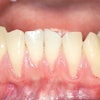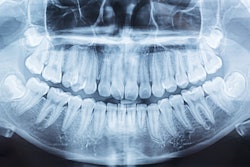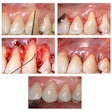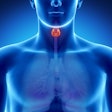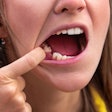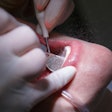An artificial intelligence (AI)-powered toothbrush can improve oral hygiene levels and duration, particularly benefiting patients with periodontitis. This research was published in the Journal of Clinical Periodontology.
Furthermore, the AI-enabled multimodal-sensing toothbrush (AI-MST), which connects to an app to provide real-time coaching and transmits data to dental clinics for remote monitoring, contributed to resolving inflamed periodontal pockets, indicating a promising, cost-effective strategy for improving oral health, according to the study.
"The tested digital health intervention significantly improved the outcome of periodontal therapy by enhancing the adherence and performance of self-performed oral hygiene," wrote the authors, led by Yuan Li of the Shanghai Jiao Tong University School of Medicine in China (J Clin Periodontol, April 1, 2024).
To evaluate the efficacy of the AI-MST, the study compared two treatments for moderate to severe gum disease. The participants, both male and female adults with generalized stage II/III periodontitis, were randomly assigned to receive either standard oral hygiene care or a digital intervention using AI technology and remote guidance from doctors.
Both groups also received standard gum disease treatment. The main goal was to see if the inflamed gum pockets improved after six months. The analysis included all participants who received the assigned treatment and at least one follow-up. A total of 100 patients were enrolled and treated between February 1 and November 30, 2022, they wrote.
 Example of the actionable data for remote monitoring. The figure illustrates the key parameters of brushing adherence and effectiveness of a representative subject. Each toothbrushing episode over the six-month study period is represented by a circle. The brushing duration in seconds is shown in panel (a). After an initial period requiring longer duration, this participant brushed slightly over three minutes per session, thus complying with the recommendation. Panel (b) illustrates the time of brushing in the 24-hour clock illustrating compliance with the prescribed three times/day regimen and occurrence after breakfast, lunch, and dinner. Panel (c) shows that after a brief learning curve at the beginning, the subject was able to obtain high brushing coverage scores, indicating that his brushing achieved the isochronicity (equal time of brushing in the various zones of the dentition) objective. Images and caption courtesy of Li et al. Licensed under the Creative Commons Noncommercial License.
Example of the actionable data for remote monitoring. The figure illustrates the key parameters of brushing adherence and effectiveness of a representative subject. Each toothbrushing episode over the six-month study period is represented by a circle. The brushing duration in seconds is shown in panel (a). After an initial period requiring longer duration, this participant brushed slightly over three minutes per session, thus complying with the recommendation. Panel (b) illustrates the time of brushing in the 24-hour clock illustrating compliance with the prescribed three times/day regimen and occurrence after breakfast, lunch, and dinner. Panel (c) shows that after a brief learning curve at the beginning, the subject was able to obtain high brushing coverage scores, indicating that his brushing achieved the isochronicity (equal time of brushing in the various zones of the dentition) objective. Images and caption courtesy of Li et al. Licensed under the Creative Commons Noncommercial License.
At the six-month mark, the proportion of inflamed gum pockets decreased significantly in both groups, with the digital intervention group showing a greater reduction. The difference between the two groups was statistically significant. Additionally, the digital intervention group demonstrated better oral hygiene outcomes. Importantly, no significant adverse events were reported throughout the study, they wrote.
However, future research is necessary to broaden the scope of data collection, analysis, and sharing with users and healthcare providers through an AI-powered platform, they wrote.

